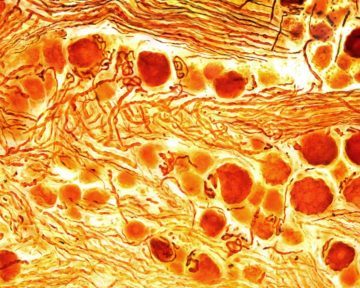Ariana Remmel in Nature:
 Some studies estimate that a large proportion of the population in Europe and the United States — as high as 50% — experiences chronic pain2,3. This pain can become debilitating over time by limiting a person’s activity and having a negative effect on their mental health. Despite the prevalence of the condition, few options exist for providing long-term relief without side effects. Even so, doctors have been moving away from prescribing opioids owing to addiction risk, and that has pared down their options even further.
Some studies estimate that a large proportion of the population in Europe and the United States — as high as 50% — experiences chronic pain2,3. This pain can become debilitating over time by limiting a person’s activity and having a negative effect on their mental health. Despite the prevalence of the condition, few options exist for providing long-term relief without side effects. Even so, doctors have been moving away from prescribing opioids owing to addiction risk, and that has pared down their options even further.
This plight inspired bioengineer Ana Moreno and colleagues at the University of California, San Diego, to seek an alternative treatment. Pain registers with the brain when a stimulus — such as touching a scalding hot pan or being poked with a sharp object — triggers neurons to send an electrical signal through the nerves in the spinal cord and upwards to the brain. This happens when pore-like openings along the neuron — called ion channels — open and close to allow ions to pass through, which transmits a current along the nerve. With chronic pain, parts of this pathway can become hyperactive.
Although there are many types of ion channel, studies have suggested that a sodium channel called Nav1.7 could play a central part in chronic pain. When people have mutations in the gene coding for this channel, they either experience extreme, constant pain, or can’t feel any pain at all.
So Moreno and her team thought they might be able to stop pain signals travelling to the brain by preventing neurons from producing Nav1.7.
More here.
